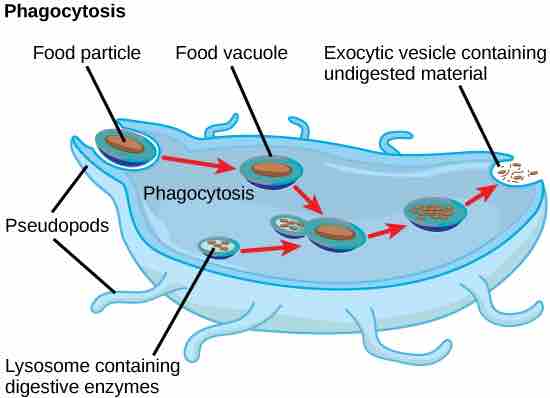Lysosomes
A lysosome has three main functions: the breakdown/digestion of macromolecules (carbohydrates, lipids, proteins, and nucleic acids), cell membrane repairs, and responses against foreign substances such as bacteria, viruses and other antigens. When food is eaten or absorbed by the cell, the lysosome releases its enzymes to break down complex molecules including sugars and proteins into usable energy needed by the cell to survive. If no food is provided, the lysosome's enzymes digest other organelles within the cell in order to obtain the necessary nutrients.
In addition to their role as the digestive component and organelle-recycling facility of animal cells, lysosomes are considered to be parts of the endomembrane system. Lysosomes also use their hydrolytic enzymes to destroy pathogens (disease-causing organisms) that might enter the cell. A good example of this occurs in a group of white blood cells called macrophages, which are part of your body's immune system. In a process known as phagocytosis or endocytosis, a section of the plasma membrane of the macrophage invaginates (folds in) and engulfs a pathogen. The invaginated section, with the pathogen inside, then pinches itself off from the plasma membrane and becomes a vesicle. The vesicle fuses with a lysosome. The lysosome's hydrolytic enzymes then destroy the pathogen .

Lysosomes digest foreign substances that might harm the cell
A macrophage has engulfed (phagocytized) a potentially pathogenic bacterium and then fuses with a lysosomes within the cell to destroy the pathogen. Other organelles are present in the cell but for simplicity are not shown.
A lysosome is composed of lipids, which make up the membrane, and proteins, which make up the enzymes within the membrane. Usually, lysosomes are between 0.1 to 1.2μm, but the size varies based on the cell type. The general structure of a lysosome consists of a collection of enzymes surrounded by a single-layer membrane. The membrane is a crucial aspect of its structure because without it the enzymes within the lysosome that are used to breakdown foreign substances would leak out and digest the entire cell, causing it to die.
Lysosomes are found in nearly every animal-like eukaryotic cell. They are so common in animal cells because, when animal cells take in or absorb food, they need the enzymes found in lysosomes in order to digest and use the food for energy. On the other hand, lysosomes are not commonly-found in plant cells. Lysosomes are not needed in plant cells because they have cell walls that are tough enough to keep the large/foreign substances that lysosomes would usually digest out of the cell.